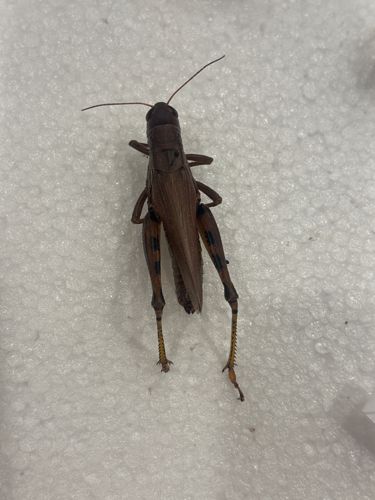Grasshopper
Scientific Name: Caelifera (suborder), commonly Acrididae (family)
Order & Family: Order: Orthoptera, Suborder: Caelifera, Family: Acrididae (most common type resembling the image)
Size: Typically 1 to 7 cm (0.4 to 2.8 inches) in length, though some species can be larger.

Natural Habitat
Grasslands, meadows, fields, cultivated areas, and other habitats with abundant vegetation.
Diet & Feeding
Herbivorous, primarily feeding on grasses, leaves, and other plant matter. Some species may also consume crops.
Behavior Patterns
Known for their jumping ability, using their powerful hind legs to escape predators. They communicate through stridulation (rubbing body parts together to produce sound). Many are solitary, but some species can form large swarms, especially locusts (a type of grasshopper).
Risks & Benefits
Risks: Large swarms (locusts) can cause significant damage to crops, leading to agricultural losses and famine in some regions. Benefits: Serve as a food source for various predators (birds, reptiles, mammals), contributing to ecosystem balance. They are also consumed by humans in some cultures.
Identified on: 9/19/2025